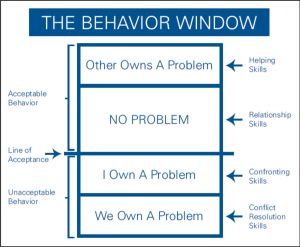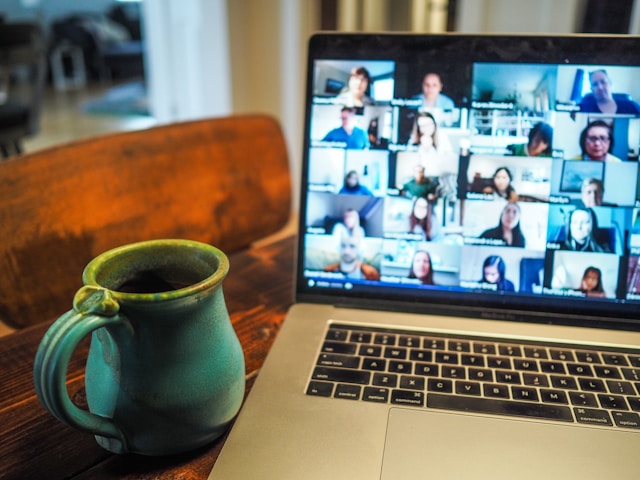
What if WORK Felt Different?
A place where collaboration flows naturally. Where influence and respect—not force or “because I said so”—set the tone.
Imagine leaders, managers, and supervisors who actually know how to create that kind of environment—where people feel valued, heard, and motivated to give their best because they want to, not because they have to.
But let’s be honest… is that what’s really happening in your organization?
Maybe you’ve got leaders who say they listen—but don’t. Managers who are great at their jobs but struggle to connect with their teams. Or leaders who get results—but leave a trail of frustration and burnout behind.
Sound familiar? You’re not alone. And the good news is—you can change this.
Now picture this instead:
- Leaders who genuinely seek out others’ ideas—and really listen.
- Managers who help people solve their own problems instead of jumping in to fix everything.
- Teams that collaborate, problem-solve, and move forward because they choose to—not because someone pulled rank. People who are energized, engaged, and excited to come to work.
Real leadership programs don’t just teach checklists or scripts—they get to the heart of what makes leadership work.
So here’s the question: What drives you as a leader?
Let’s talk. We’re really good at listening.
Summer Course
L.E.T. Online Course Starting in July!
No matter where you are in your professional journey, you can learn how to foster a collaborative and communicative work environment through Leader Effectiveness Training. With insightful guidance and practical advice, Kelly Meier, Certified Instructor and experienced professional, leads the class in an approachable, easy-to-apply manner.
The Goal of L.E.T.
The goal of Leader Effectiveness Training (L.E.T.) is to introduce communication and conflict resolution skills that will help you be more effective in your role and develop stronger, more positive working relationships. These skills go beyond just getting the job done—they help you engage with others in a way that encourages collaboration, trust, and mutual respect, transforming the way you approach everyday challenges and communication.
A Much More Effective Way to Handle Conflict
Conflict is a natural part of working with people—it’s going to happen. The problem is, most people only know two ways to deal with it:
- I impose my solution on you and “win,” or
- I back off and let you have your way, essentially “letting you win.”
It’s a win-lose situation, and it’s common in workplaces and everyday life. Unfortunately, this approach often leaves both sides frustrated and dissatisfied, especially when the tension lingers or the problem isn’t truly resolved. But here’s the thing: this doesn’t have to be the only option.
In Leader Effectiveness Training (L.E.T.), we introduce a third, far more effective approach to conflict resolution that completely changes the game. Rather than focusing on power struggles or giving in, we focus on mutual satisfaction—working toward a solution that meets the needs of both parties. Instead of creating a winner and a loser, we aim for everyone to feel heard and valued, leading to a win-win scenario.
When everyone gets their needs met, it fosters a more cooperative, positive, and productive environment. And that’s exactly what L.E.T. teaches you: how to resolve conflict in a way that strengthens working relationships, whether you’re dealing with colleagues, clients, or team members.
This is how we turn conflict into an opportunity for growth, collaboration, and deeper connections within your team. It’s not just about resolving issues—it’s about preventing them from escalating in the first place and creating a culture where collaboration thrives over competition.
A Refreshing Approach to Business Training
So much of traditional business training focuses on skills that work when everything is smooth sailing—like asking the right questions to uncover what clients want. But what happens when the waters aren’t smooth?
When someone’s upset or resistant, asking the typical questions doesn’t work. It can even make things worse.
That’s where L.E.T. comes in. It focuses on how to get past roadblocks and turn a challenging conversation into a productive one. Whether you’re navigating client resistance or diffusing tension within your team, L.E.T. shows you the skills needed to return to calm, clear, and effective communication.
Benefits of L.E.T. for Individuals
Benefits of L.E.T. for Teams and Organizations
This isn’t just a lecture-based course—it’s interactive, hands-on, and designed for real-world application. You’ll learn by doing, with plenty of opportunities for coaching, skill practice, discussions, and group activities.
Here are a few of the core skills you’ll develop in L.E.T.:
- Identify who owns the problem in any situation.
- Learn the 12 communication roadblocks that get in the way of resolution.
- Master the art of Active Listening—hearing feelings and clarifying information.
- Learn how to use I-Messages for confrontation and appreciation.
- Gain confidence using Method III to resolve conflicts or mediate between others.
- Understand how to manage Values Collisions with respect and tact.
Apply the Principle of Participation to foster better teamwork and collaboration.
The Framework (Problem Ownership & The Behavior Window)

You can learn all the skills in the world to help you have better work relationships, but what drives you to want to use them is the key to their success. These people you work with every day? You need those connections to be strong, trusting, collaborative and respectful, right? That seems like a pretty strong motivation to do whatever you can to strengthen those relationships and your career.
The best part of L.E.T. is that it comes with a handy visual aid. So, keeping that in mind, let’s check out this Behavior Window or what we like to call your “Relationship GPS”. It tells you exactly what skill to use and when. All you have to do is determine “Who owns the problem?” and use the appropriate skill.
- If the other person is signaling that they are upset or experiencing a problem or concern, place that signaling behavior in the top (first) part of the Window. They own the problem.
- If both you and the other person are functioning effectively, i.e., neither of you is bothered or upset, place that behavior (what you both are doing that is effective, etc.) in the second part of the Window. No Problem!
- When the other person’s behavior is interfering with you, i.e. you are upset, worried, etc., because of something they are doing or saying, put that person’s behavior in the third part of the Window. I own the problem.
- When both of you are experiencing upset feelings, i.e. are in conflict with each other, place those behaviors in the fourth (bottom) part of the Window. We own the problem.
And when you take L.E.T., you learn how, when, why, and how to use all of these skills. And you’re on your way to being a better leader!
And that’s just the beginning!
Meet the Heart Behind L.E.T.

Dr. Thomas Gordon, creator of the Leader Effectiveness Training (L.E.T.) program, was a true trailblazer in the world of leadership and communication. Long before “people skills” became a buzzword, he was championing a model of leadership built on mutual respect, collaboration, and open communication.
His work laid the foundation for what we now recognize as democratic, relationship-centered leadership—and the practical tools needed to make it happen. The skills he taught weren’t just theory—they were actionable, repeatable, and transformative.
The Gordon Model has reached people and companies all over the globe, including Fortune 500s and countless leaders who wanted to do things differently—and better. Dr. Gordon’s influence was so impactful, he was nominated for the Nobel Peace Prize three times. He also received the American Psychological Foundation’s Gold Medal for his contributions to public interest and a Lifetime Achievement Award from the California Psychological Association.
His ideas continue to inspire positive change across workplaces, families, and communities—and through the L.E.T. program, those foundational skills become part of the everyday leadership toolkit—down-to-earth, useful, and built to last.



